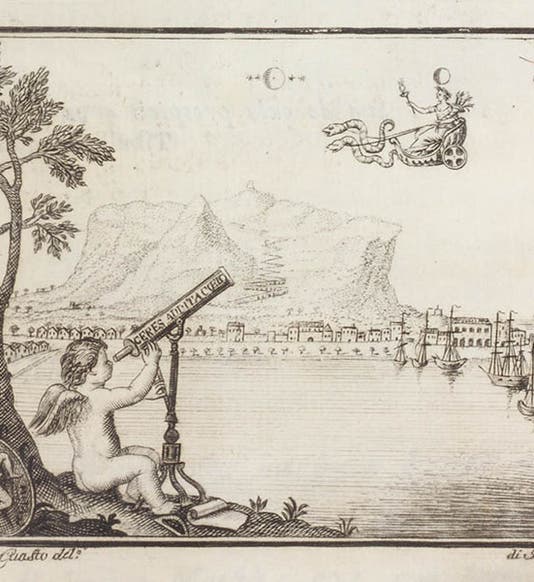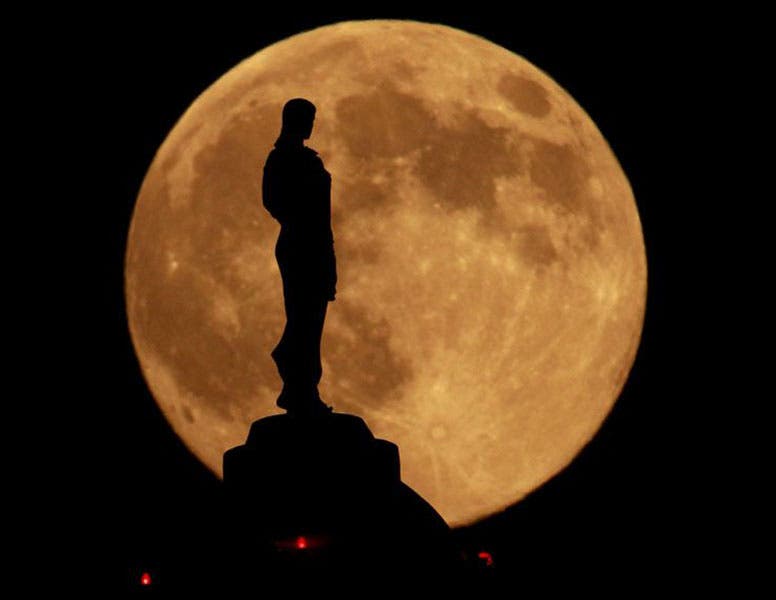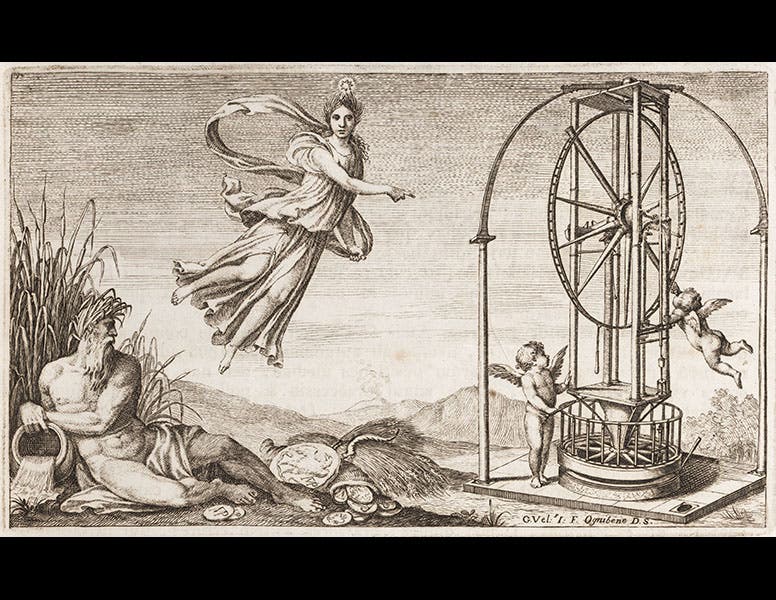Scientist of the Day - Giuseppe Piazzi
Giuseppe Piazzi, an Italian astronomer, was born July 16, 1746. Piazzi presided over the observatory at Palermo on the island of Sicily, and on the first day of the new century, Jan. 1, 1801, Piazzi discovered a new heavenly body. It travelled along the ecliptic like a planet, and it moved slower than Mars and faster than Jupiter, suggesting that it lay somewhere between the two. Piazzi named it Ceres, after the patron goddess of Sicily. The first image above is an allegorical representation of Piazzi’s discovery—Jupiter is the object with 4 moons to the left of Ceres, and Mars is to the right. It turned out that Ceres was an asteroid, not a planet, but that was OK, because instead of being the second astronomer to discover a new planet, Piazzi became the first to discover an asteroid. Three more asteroids were spotted in the next six years, and then no more until just before mid-century, when they began to be sighted by the hundreds.
In 2006, Ceres was redesignated as a dwarf planet, so Piazzi now has the honor of being the first person to discover a dwarf planet (the second dwarf planet, Pluto, would not be observed until 1930). The goddess Ceres, namesake of the asteroid/dwarf planet, was the patron of grain, specifically wheat and barley. She ought to have a statue in Battle Creek, Michigan, and perhaps she does. But for sure Ceres has one in Jefferson City, Missouri, right on top of the State Capitol building and facing west, where she can’t quite see the purple mountains’ majesty, but does stand above the fruited plain. The second image above shows Ceres the dwarf planet as scanned by the Dawn Spacecraft in 2015. The third image captures the goddess Ceres of Jefferson City, fittingly posed against another astronomical object, the full moon.
We have a copy of Piazzi’s book about his discovery, Della scoperta del nuovo pianeta Cerere Ferdinandea (1802), in our History of Science Collection, which is the source for our first image. Piazzi discovered Ceres with a transit circle made by Jesse Ramsden of England. Ramsden was one of our first Scientists of the Day when we started this series back in the fall of 2014. In his star catalog of 1814, the Praecipuarum stellarum, Piazzi included a headpiece that depicted the Ramsden circle (fourth image). The instrument still stands in Palermo; you can see a modern photograph of it in our earlier essay on Ramsden.
Dr. William B. Ashworth, Jr., Consultant for the History of Science, Linda Hall Library and Associate Professor, Department of History, University of Missouri-Kansas City. Comments or corrections are welcome; please direct to ashworthw@umkc.edu.










